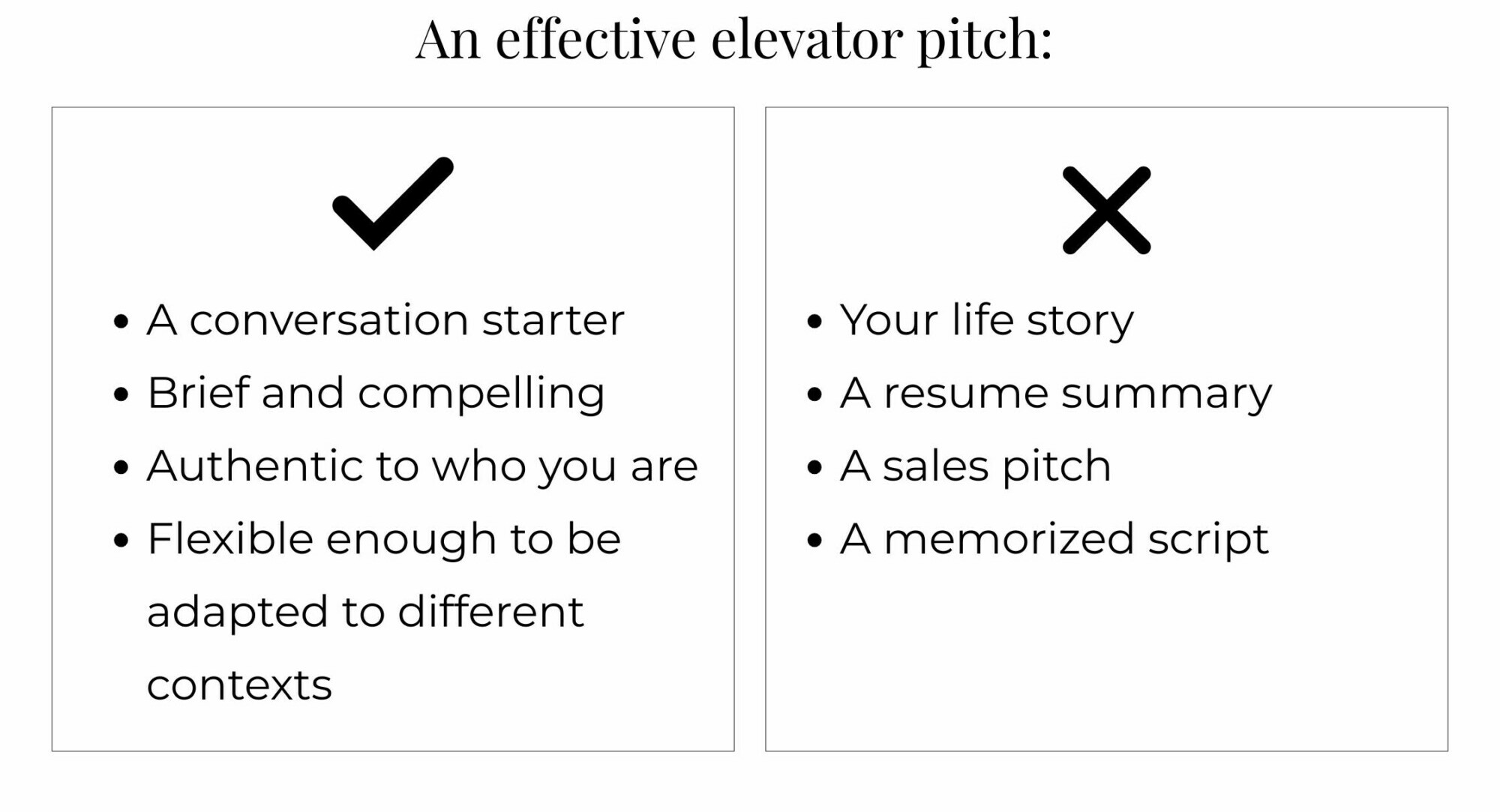Boost your professional brand with insights from Julie Chase, founder of Dream Job Catcher, an executive leadership coaching and development company. This post unpacks the art of crafting a compelling elevator pitch to showcase your unique value and stand out. Apply this simple framework and start opening doors to new opportunities today!

What do you think of when you hear “professional branding?” Most people immediately think of updating their resume or LinkedIn profile. While these are certainly key elements deserving of your attention, there’s another powerful tool that often gets overlooked: your elevator pitch.
Most people wing it in the moment, missing a prime opportunity to make a strong first impression.
Building your professional brand isn’t just a job search effort. It’s a way to stand out in your organization, company and industry. Your brand can open doors, create opportunities and differentiate you in a big company or marketplace.
Recently, I had the pleasure of leading a workshop on this very topic. I’d love to share the framework that has helped thousands of professionals craft a compelling pitch that’s authentic to them.
The Power of an Effective Elevator Pitch
At the core of your professional brand is your elevator pitch—a brief, compelling story that quickly communicates who you are, what you do and the unique value you bring. Despite its importance, many professionals (even senior executives) struggle to articulate their value concisely and effectively. So what makes a good pitch? Here are some factors to keep in mind of what it is and is not.

Crafting your Elevator Pitch: a Simple Framework
When developing your elevator pitch, include these key components:
- Your role and core work. Begin with a clear “I am” statement that establishes your professional identity and the high level impact you make (e.g., drive revenue growth or operational efficiency).
- Your impact via proof points. This is crucial and often overlooked. How do you contribute to your organization, business goals, customers, or key stakeholders? Include specific proof points that demonstrate this impact in a concrete way.
- Your approach and soft skills. Use strong, active verbs like “leads,” “collaborates,” “solves,” and “negotiates” rather than passive phrases like “responsible for” or “participate in.”
- Your superpowers. These are your distinctive strengths—perhaps being both a strategic thinker and precise executor or your ability to bridge technical and business perspectives or being a skilled relationship builder.
- Your passions and interests. What genuinely excites you about your work or professional development or new technologies? This makes you more relatable and creates connection points with others.
Here’s a proven structure:
- Start with a clear “I am” statement.
- Provide relevant background at a high level.
- Highlight your major impact with specific proof points.
- Include your zone of excellence and superpowers.
- Share what you’re most passionate about.
- Close with a clear ending that isn’t a summary.
“Authenticity is the daily practice of letting go of who we think we’re supposed to be and embracing who we are.”— Brené Brown
Being Authentic: the Heart of an Effective Brand
The most powerful professional brands are authentic ones. As Brené Brown wisely notes, “Authenticity is the daily practice of letting go of who we think we’re supposed to be and embracing who we are.”
To ensure your elevator pitch reflects who you are:
- Focus on what’s genuinely true to you, not what you think others want to hear.
- Use your own everyday vocabulary rather than business jargon or obscure acronyms.
- Practice until comfortable, but don’t memorize word-for-word.
- Avoid harsh self-judgment and comparison to others.
- Let go of people-pleasing or posturing, which creates distance rather than connection.
Remember that developing your professional brand is an ongoing investment in your career. Your elevator pitch should evolve as your career progresses and your professional identity develops.
Putting it into Practice
Ready to craft or refine your elevator pitch? Here are some reflection questions to get started:
- What is your current role, and what core work do you lead?
- What specific impact do you make for your organization, team or customers?
- What common themes have run throughout your career?
- What unique strengths or superpowers do you consistently demonstrate?
- What aspects of your work genuinely energize and excite you?
Your turn! Draft your elevator pitch using the structure outlined above and then practice it with trusted colleagues until it feels natural. Remember, the goal isn’t perfection – it’s making an authentic connection. If you want to see a couple examples, click here for inspo.
Your professional brand is too important to leave to chance. Take the time to thoughtfully craft your high level story and create great opportunities for yourself!


